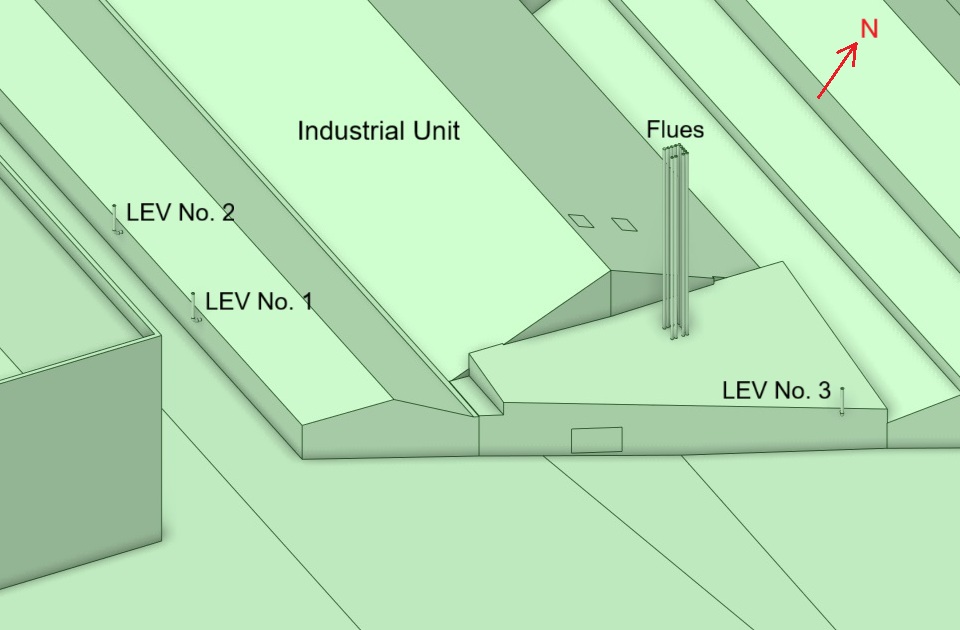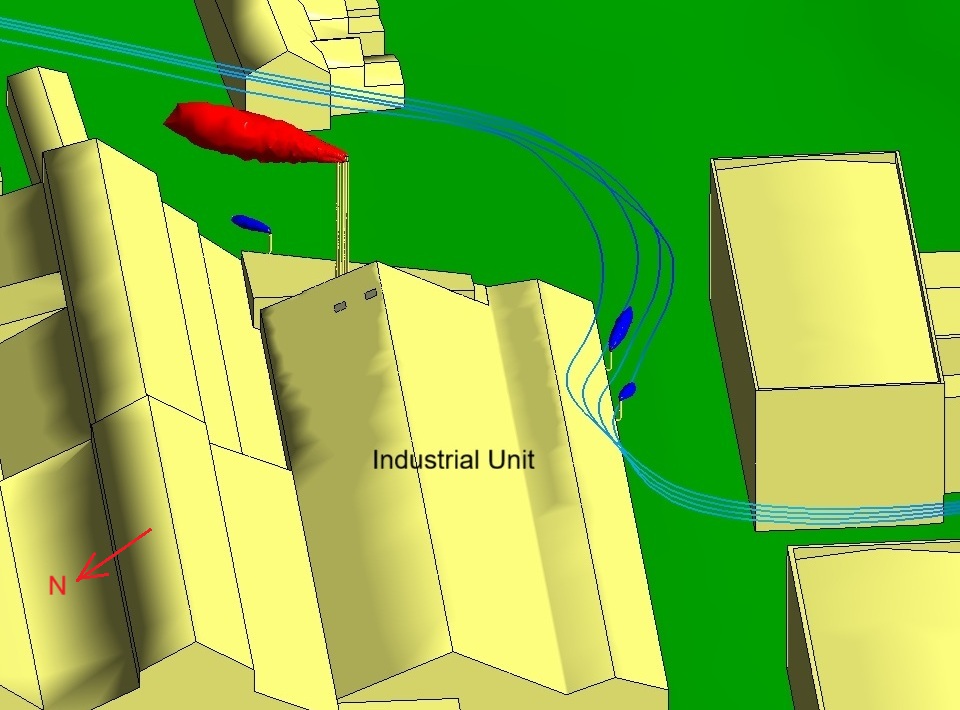Case Study – Fume Dispersion from an Industrial Unit
The challenge
The University of Birmingham is refitting a single-storey industrial unit on the
Tyseley Energy Park so that it will become a manufacturing unit that will
discharge gaseous waste products to the atmosphere (Figure 1). There will be
eleven flues on the roof of the building, discharging a particular gas, either
nitrogen, hydrogen or argon. In addition, there will be outlets from three LEVs
that will discharge trace quantities of waste products. To be safe the pollutants
must rise clear of the industrial unit and other buildings, given the wind
conditions expected over the Energy Park.
Fig 1 Industrial Unit

The solution
Atkinson Science created a CFD model of the industrial unit and the surrounding
buildings and trees within 300 m of the unit. We used the model to calculate the
dispersion of the pollutants at three wind speeds (0.25, 2.5 and
10 m s−1) with the wind from the north and every 45° from the north.
All three gases from the flues are asphyxiants because they can displace the
oxygen in the air. In this study we were quite conservative and assumed that the
air will only become safe to breathe when the oxygen concentration returns to
20.8% by volume (compared with 20.95% in atmospheric air). A volume of a pollutant
gas must be diluted with 142 equal volumes of air to achieve this oxygen
concentration. This amount of dilution is more than enough to prevent hydrogen
from becoming a combustion risk.
The LEVs discharge pollutants in trace amounts below the long-term exposure limit.
They can present a risk if there is an accidental spill of a pollutant. There is
no official figure for the number of dilutions that an LEV system must produce,
but we would expect a well-designed system to produce a minimum of 100 dilutions.
This number of dilutions would safeguard against a surge in pollutant
concentration of two orders of magnitude.
For each wind condition, we plotted the isosurface representing an oxygen
concentration of 20.8% by volume, and for each LEV, the isosurface representing
100 dilutions of the pollutants. We found that none of the isosurfaces came into
contact with a building or the ground at any of the wind conditions. At some wind
conditions the presence of a two-storey building to the south of the industrial
unit complicated the air flow onto the unit and made the discharge from two of the
LEVs change direction, as shown in Figure 2. However, the pollutants dispersed so
rapidly that there was no risk to safety.
Fig 2 Isosurfaces and streamlines for a
southwest wind at 10 m s−1

The benefits
The CFD study demonstrated to the University of Birmingham that the pollutants
discharged from the industrial unit will disperse safely into the atmosphere at
the wind conditions likely to occur on the Energy Park.